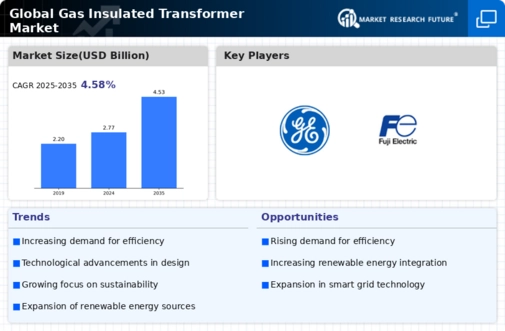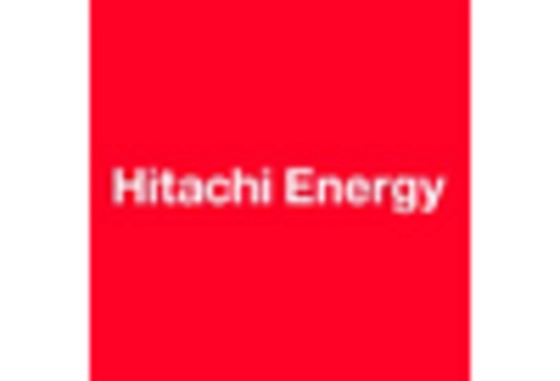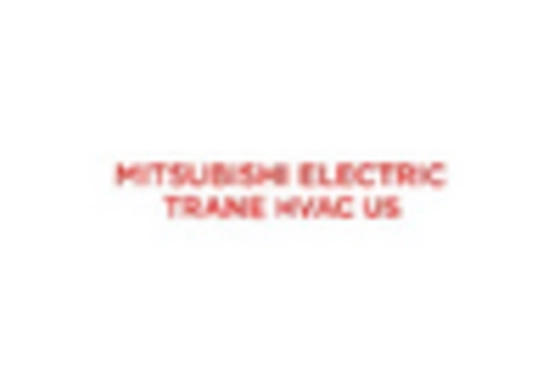-
Executive Summary
-
Scope of the Report
-
Market Definition
-
Scope of the Study
- Definition
- Research Objective
- Assumptions
- Limitations
-
Research Process
- Primary Research
- Secondary Research
-
Market size Estimation
-
Forecast Model
-
Market Landscape
-
Porter’s Five Forces Analysis
- Threat of New Entrants
- Bargaining power of buyers
- Bargaining power of suppliers
- Threat of substitutes
- Segment rivalry
-
Supply Chain Analysis
-
Market Dynamics
-
Introduction
-
Market Drivers
-
Market Restraints
-
Market Opportunities
-
Market Trends
-
Global Gas Insulated Transformer Market, By Type
-
Introduction
-
Instrument Transformer
- Market Estimates & Forecast, 2023-2032
- Market Estimates & Forecast by Region, 2023-2032
-
Others
- Market Estimates & Forecast, 2023-2032
- Market Estimates & Forecast by Region, 2023-2032
-
Global Gas Insulated Transformer Market, By Voltage Rating
-
Introduction
-
Medium Voltage
- Market Estimates & Forecast, 2023-2032
- Market Estimates & Forecast by Region, 2023-2032
-
High Voltage
- Market Estimates & Forecast, 2023-2032
- Market Estimates & Forecast by Region, 2023-2032
-
Extra High Voltage
- Market Estimates & Forecast, 2023-2032
- Market Estimates & Forecast by Region, 2023-2032
-
Global Gas Insulated Transformer Market, By Installation
-
Introduction
-
Outdoor
- Market Estimates & Forecast, 2023-2032
- Market Estimates & Forecast by Region, 2023-2032
-
Indoor
- Market Estimates & Forecast, 2023-2032
- Market Estimates & Forecast by Region, 2023-2032
-
Global Gas Insulated Transformer Market, By End-User
-
Introduction
-
Utility
- Market Estimates & Forecast, 2023-2032
- Market Estimates & Forecast by Region, 2023-2032
-
Industrial
- Market Estimates & Forecast, 2023-2032
- Market Estimates & Forecast by Region, 2023-2032
-
Commercial
- Market Estimates & Forecast, 2023-2032
- Market Estimates & Forecast by Region, 2023-2032
-
Global Gas Insulated Transformer Market, By Type of Cooling
-
Introduction
-
Gas directed Air natural cooling
- Market Estimates & Forecast, 2023-2032
- Market Estimates & Forecast by Region, 2023-2032
-
Gas directed Air forced cooling
- Market Estimates & Forecast, 2023-2032
- Market Estimates & Forecast by Region, 2023-2032
-
Gas directed water forced cooling
- Market Estimates & Forecast, 2023-2032
- Market Estimates & Forecast by Region, 2023-2032
-
Global Gas Insulated Transformer Market, By Region
-
Introduction
-
North America
- Market Estimates & Forecast, 2023-2032
- Market Estimates & Forecast by Type, 2023-2032
- Market Estimates & Forecast by Voltage Rating, 2023-2032
- Market Estimates & Forecast Installation, 2023-2032
- Market Estimates & Forecast by End-User, 2023-2032
- Market Estimates & Forecast by Type of Cooling, 2023-2032
- U.S.
- Canada
-
Europe
- Market Estimates & Forecast, 2023-2032
- Market Estimates & Forecast by Type, 2023-2032
- Market Estimates & Forecast By Voltage Rating, 2023-2032
- Market Estimates & Forecast By Installation, 2023-2032
- Market Estimates & Forecast by End-User, 2023-2032
- Market Estimates & Forecast by Type of Cooling, 2023-2032
- UK
- Germany
- France
- Italy
- Rest of Europe
-
Asia-Pacific
- Market Estimates & Forecast, 2023-2032
- Market Estimates & Forecast by Type, 2023-2032
- Market Estimates & Forecast By Voltage Rating, 2023-2032
- Market Estimates & Forecast By Installation, 2023-2032
- Market Estimates & Forecast by End-User, 2023-2032
- Market Estimates & Forecast by Type of Cooling, 2023-2032
- China
- Japan
- India
- Rest of Asia-Pacific
-
Rest of the World
- Market Estimates & Forecast, 2023-2032
- Market Estimates & Forecast by Type, 2023-2032
- Market Estimates & Forecast By Voltage Rating, 2023-2032
- Market Estimates & Forecast by Installation,2023-2032
- Market Estimates & Forecast by End-User, 2023-2032
- Market Estimates & Forecast by Type of Cooling, 2023-2032
-
Competitive Landscape
-
Company Profile
-
ABB Ltd. (Switzerland)
- Company Overview
- Product/Services Offering
- Financial Overview
- Key Developments
- Strategy
- SWOT Analysis
-
General Electric (US)
- Company Overview
- Product /Services Offering
- Financial Overview
- Key Developments
- Strategy
- SWOT Analysis
-
Mitsubishi Electric Corporation (Japan)
- Company Overview
- Product /Services Offering
- Financial Overview
- Key Developments
- Strategy
- SWOT Analysis
-
Siemens AG (Germany)
- Company Overview
- Product /Services Offering
- Financial Overview
- Key Developments
- Strategy
- SWOT Analysis
-
Toshiba Corporation (Japan)
- Company Overview
- Product /Services Offering
- Financial Overview
- Key Developments
- Strategy
- SWOT Analysis
-
Arteche (Spain)
- Company Overview
- Product /Services Offering
- Financial Overview
- Key Developments
- Strategy
- SWOT Analysis
-
Meidensha Corporation (Japan)
- Company Overview
- Product /Services Offering
- Financial Overview
- Key Developments
- Strategy
- SWOT Analysis
-
Takaoka Toko co., ltd (Japan)
- Company Overview
- Product /Services Offering
- Financial Overview
- Key Developments
- Strategy
- SWOT Analysis
-
Fuji Electric co., Ltd. (Japan)
- Company Overview
- Product /Services Offering
- Financial Overview
- Key Developments
- Strategy
- SWOT Analysis
-
Chint Group (China)
- Company Overview
- Product /Services Offering
- Financial Overview
- Key Developments
- Strategy
- SWOT Analysis List of Tables
-
Global Gas Insulated Transformer Market: By Region, 2023-2032
-
North America Gas Insulated Transformer Market: By Country, 2023-2032
-
Europe Gas Insulated Transformer Market: By Country, 2023-2032
-
Asia-Pacific Gas Insulated Transformer Market: By Country, 2023-2032
-
RoW Gas Insulated Transformer Market: By Country, 2023-2032
-
Global Gas Insulated Transformer Market by Type: By Regions, 2023-2032
-
North America Gas Insulated Transformer Market by Type: By Country, 2023-2032
-
Europe Gas Insulated Transformer Market by Type: By Country, 2023-2032
-
Asia-Pacific Gas Insulated Transformer Market by Type: By Country, 2023-2032
-
RoW Gas Insulated Transformer Market by Type: By Country, 2023-2032
-
Global Gas Insulated Transformer Market, by Voltage Rating, By Regions, 2023-2032
-
North America Gas Insulated Transformer Market, by Voltage Rating, By Country, 2023-2032
-
Europe Gas Insulated Transformer Market, by Voltage Rating, By Country, 2023-2032
-
Asia-Pacific Gas Insulated Transformer Market, by Voltage Rating, By Country, 2023-2032
-
RoW Gas Insulated Transformer Market, by Voltage Rating, By Country, 2023-2032
-
Global Gas Insulated Transformer Market, by Installation, By Regions, 2023-2032
-
North America Gas Insulated Transformer Market, by Installation, By Country, 2023-2032
-
Europe Gas Insulated Transformer Market, by Installation, By Country, 2023-2032
-
Asia-Pacific Gas Insulated Transformer Market, by Installation, By Country, 2023-2032
-
RoW Gas Insulated Transformer Market, by Installation, By Country, 2023-2032
-
Global Gas Insulated Transformer Market, By End Use, By Regions, 2023-2032
-
North America Gas Insulated Transformer Market, By End Use, By Country, 2023-2032
-
Europe Gas Insulated Transformer Market, By End Use, By Country, 2023-2032
-
Asia-Pacific Gas Insulated Transformer Market, By End Use, By Country, 2023-2032
-
RoW Gas Insulated Transformer Market, By End Use, By Country, 2023-2032
-
Global Gas Insulated Transformer Market, by type of cooling, By Regions, 2023-2032
-
North America Gas Insulated Transformer Market, by type of cooling, By Country, 2023-2032
-
Europe Gas Insulated Transformer Market, by type of cooling, By Country, 2023-2032
-
Asia-Pacific Gas Insulated Transformer Market, by type of cooling, By Country, 2023-2032
-
RoW Gas Insulated Transformer Market, by type of cooling, By Country, 2023-2032
-
Global Gas Insulated Transformer Market: By Region, 2023-2032
-
North America Gas Insulated Transformer Market, By Country
-
North America Gas Insulated Transformer Market, by Type
-
North America Gas Insulated Transformer Market, By Voltage Rating
-
North America Gas Insulated Transformer Market, By Installation
-
North America Gas Insulated Transformer Market, By Type of Cooling
-
North America Gas Insulated Transformer Market, By End Use
-
Europe: Gas Insulated Transformer Market, By Country
-
Europe: Gas Insulated Transformer Market, by Type
-
Europe: Gas Insulated Transformer Market, By Application
-
Europe: Gas Insulated Transformer Market, By End-Use
-
Europe: Gas Insulated Transformer Market, By Type of Cooling
-
Europe: Gas Insulated Transformer Market, By End Use
-
Asia-Pacific: Gas Insulated Transformer Market, By Country
-
Asia-Pacific: Gas Insulated Transformer Market, by Type
-
Asia-Pacific: Gas Insulated Transformer Market, By Application
-
Asia-Pacific: Gas Insulated Transformer Market, By End-Use
-
Asia-Pacific: Gas Insulated Transformer Market, By Type of Cooling
-
Asia-Pacific: Gas Insulated Transformer Market, By End Use
-
RoW: Gas Insulated Transformer Market, By Region
-
RoW Gas Insulated Transformer Market, by Type
-
RoW Gas Insulated Transformer Market, By Application
-
RoW Gas Insulated Transformer Market, By End-Use
-
RoW Gas Insulated Transformer Market, By Type of Cooling
-
RoW Gas Insulated Transformer Market, By End Use List of Figures
-
RESEARCH PROCESS OF MRFR
-
TOP DOWN & BOTTOM UP APPROACH
-
MARKET DYNAMICS
-
IMPACT ANALYSIS: MARKET DRIVERS
-
IMPACT ANALYSIS: MARKET RESTRAINTS
-
PORTER’S FIVE FORCES ANALYSIS
-
SUPPLY CHAIN ANALYSIS
-
GLOBAL GAS INSULATED TRANSFORMER MARKET SHARE, BY TYPE, 2023 (%)
-
GLOBAL GAS INSULATED TRANSFORMER MARKET, TYPE, 2023-2032 (USD MILLION)
-
GLOBAL GAS INSULATED TRANSFORMER MARKETSHARE, BY VOLTAGE RATING, 2023 (%)
-
GLOBAL GAS INSULATED TRANSFORMER MARKET, BY INSTALLATION, 2023-2032 (USD MILLION)
-
GLOBAL GAS INSULATED TRANSFORMER MARKET, BY TYPE OF COOLING, 2023-2032 (USD MILLION)
-
GLOBAL GAS INSULATED TRANSFORMER MARKET, BY END USE, 2023-2032 (USD MILLION)
-
GLOBAL GAS INSULATED TRANSFORMER MARKET SHARE (%), BY REGION, 2023
-
GLOBAL GAS INSULATED TRANSFORMER MARKET, BY REGION, 2023-2032 (USD MILLION)
-
NORTH AMERICA GAS INSULATED TRANSFORMER MARKETSHARE (%), 2023
-
NORTH AMERICA GAS INSULATED TRANSFORMER MARKET BY COUNTRY, 2023-2032 (USD MILLION)
-
EUROPE GAS INSULATED TRANSFORMER MARKETSHARE (%), 2023
-
EUROPE GAS INSULATED TRANSFORMER MARKETBY COUNTRY, 2023-2032 (USD MILLION)
-
ASIA-PACIFIC GAS INSULATED TRANSFORMER MARKETSHARE (%), 2023
-
ASIA-PACIFIC GAS INSULATED TRANSFORMER MARKET BY COUNTRY, 2023-2032 (USD MILLION)
-
REST OF THE WORLD GAS INSULATED TRANSFORMER MARKETSHARE (%), 2023
-
REST OF THE WORLD GAS INSULATED TRANSFORMER MARKET BY COUNTRY, 2023-2032 (USD MILLION)









Leave a Comment